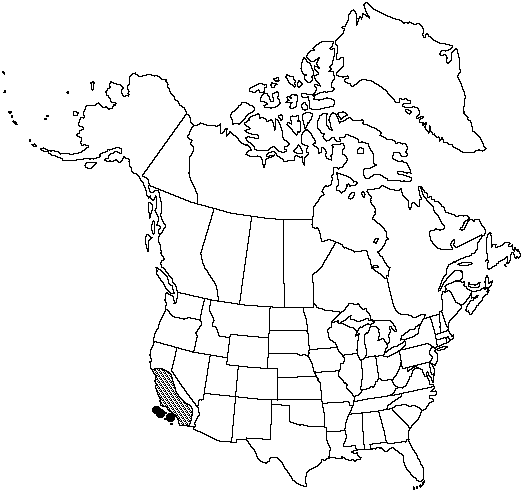Difference between revisions of "Selaginella bigelovii"
Bull. Torrey Bot. Club 25: 130. 1898.
FNA>Volume Importer |
FNA>Volume Importer |
||
| Line 46: | Line 46: | ||
|publication year=1898 | |publication year=1898 | ||
|special status= | |special status= | ||
| − | |source xml=https://jpend@bitbucket.org/aafc-mbb/fna-data-curation.git/src/ | + | |source xml=https://jpend@bitbucket.org/aafc-mbb/fna-data-curation.git/src/f6b125a955440c0872999024f038d74684f65921/coarse_grained_fna_xml/V2/V2_67.xml |
|genus=Selaginella | |genus=Selaginella | ||
|subgenus=Selaginella subg. Tetragonostachys | |subgenus=Selaginella subg. Tetragonostachys | ||
Revision as of 18:57, 24 September 2019
Plants on rock or terrestrial, forming clumps. Stems radially symmetric, underground (rhizomatous) and aerial, not readily fragmenting, irregularly forked; rhizomatous and aerial stems often with 1 branch arrested, budlike, tips straight; aerial stems erect or occasionally ascending. Rhizophores borne on upperside of stems, restricted to rhizomes and lower 1/3 of aerial stems, 0.3–0.4 mm diam. Leaves dimorphic, not clearly ranked. Rhizomatous stem leaves persistent, tightly appressed, scalelike. Aerial stem leaves appressed, ascending, green, linear-lanceolate to narrowly lanceolate, 2.2–3.8 × 0.29–0.4(–0.75) mm; abaxial ridges present; base abruptly adnate, cordate to almost peltate, pubescent or sometimes glabrous; margins short-ciliate at base, denticulate toward apex, cilia white to transparent or greenish, spreading at base, ascending toward apex, 0.02–0.08 mm; apex keeled, bristled; bristle puberulent, rough, transparent to whitish, 0.23–0.75 mm. Strobili solitary, (0.4–)1–1.5 cm; sporophylls ovate-lanceolate to lanceolate, abaxial ridges not prominent, base glabrous, margins short-ciliate to denticulate, apex bristled. 2n = 18.
Habitat: Exposed rock crevices, cliffs, boulders, sandstone or igneous rock, serpentine, or gravelly soil
Elevation: 0–2000 m
Distribution

Calif., Mexico in Baja California.
Discussion
Selaginella bigelovii is a member of the series Arenicolae (R. M. Tryon 1955) and is closely related to S. rupincola (see discussion). It may be confused with S. × neomexicana. Selaginella bigelovii, however, always has well-developed megasporangia with most of the megaspores and microspores well formed, whereas S. × neomexicana is a presumed sterile hybrid that does not form megaspores, seldom forms microspores, and usually has most sporangia misshapen (R. M. Tryon 1955). Moreover, S. × neomexicana has not been reported from either California or Baja California.
Selected References
None.